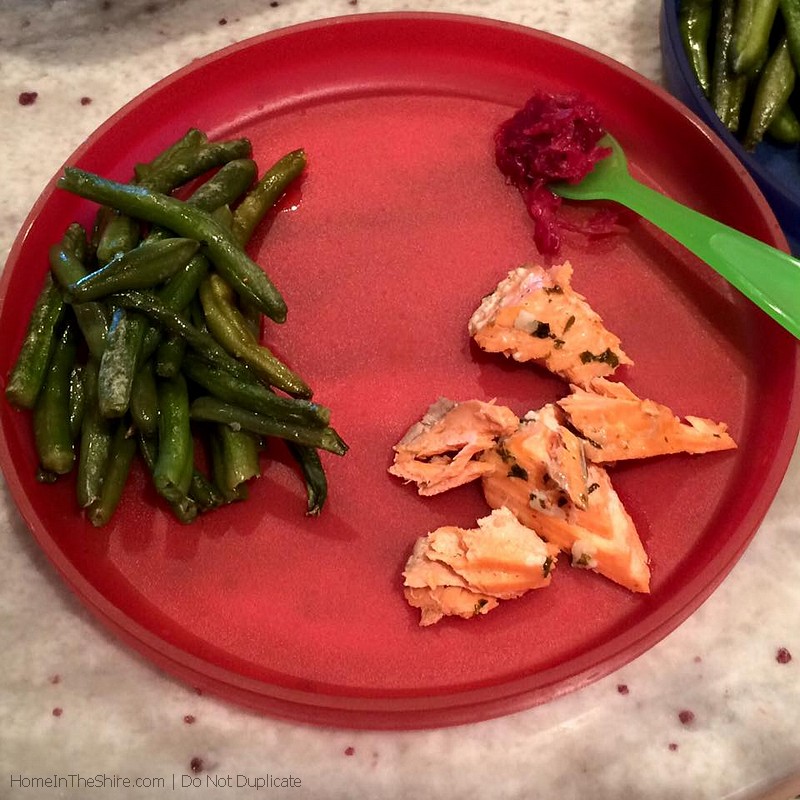GAPS – Challenging, but Worth It!
I have another post in the works with more detail regarding my youngest and how the GAPS diet has brought such improvement for her. In the meantime, here’s an overview of our GAPS story. My 3 1/2 year old daughter, Lily, has Down syndrome. She also tends to have nasal congestion, though thankfully she’s never had an ear infection (yay!), and she is prone to eczema and dry cheeks. My youngest, Lauren, had her second birthday in April of this year. Her story is the one I’ll be sharing later, so I’ll be brief and say that she was diagnosed with Mixed Development Disorder in November of last year. (I think this is sort of a catchall diagnosis given to qualify for therapy, but not necessarily very informative or useful information by itself.) She was delayed developmentally and had some concerning behaviors and stimming/tic movements.
Because of the issues both girls were having, we tested for food intolerance in December 2014. When the results came back in January we immediately removed all gluten, dairy, eggs, soy, peanuts, green peas, and almonds. We saw major improvement in both girls. However, the issues didn’t entirely resolve, and Lauren developed eczema when she never had it before.
After being allergen-free for 3 months, my toddler girls started GAPS Intro on 4/14/15. I’d heard about GAPS a few years ago in a Down syndrome group. With my youngest experiencing some ASD symptoms my research again led me to it. I was also very frustrated because, while the allergy-free diet had provided improvement in many areas, Lauren’s eczema was getting really bad. I researched, I prayed, I looked at other options, like simply going grain-free or experimenting with removing various foods. For weeks I was undecided on how to proceed. Rather than being smart about it, prepping in advance, shopping, getting ready, I just decided to start. And I did. I tend to be an overplanner. So, for me, I think the only way I was going to do it was just to do it. To stop thinking about it, stop researching, and just move forward. The girls had a tummy bug and since they couldn’t keep anything down anyway, I made broth, quickly finished the book, found recipes and ideas, and that was our Day 1 on GAPS Intro!
That first week was TOUGH. The girls were super cranky, refusing naps, and generally just not happy toddlers. I seriously considered quitting several times. I think there were some tears involved…mine. The first month was difficult. They were so hungry. The amount of food they were consuming would rival that of a teenage boy. I kid you not. If you spend any time in GAPS groups you will hear of the raging hunger that comes with beginning GAPS Intro. It’s no joke. Be prepared. I would no sooner finish cleaning up breakfast than the girls would be asking for more food. Just when I thought I couldn’t take it anymore, just over 4 weeks in, it finally subsided.
What about dining out?
In the past 2+ months we have not taken the girls to a restaurant. I think it would be possible, but difficult. If I had plans to have dinner out I would bring meals for them from home. I have done this before GAPS. If the server asks, just tell them there are food allergies. If for some reason that wasn’t possible, I would ask for plain meat and plain veggies for them.
What about grocery cost?
This will really depend on what you are currently buying, as well as whether your entire family is going on GAPS or just certain family members. Unless you are already shopping for organic and pasture-raised meats, your grocery budget will likely increase. (Particularly during that first month when you are experiencing the raging hunger phase.) However, if you buy a lot of processed, packaged, and convenience foods, this could potentially be LESS expensive. And like any other diet, you can make wise choices that will enable you to maintain a reasonable food budget. We haven’t yet been able to add eggs, dairy, or nuts, which simplifies my grocery list a bit as well. We are just now in Stage 6 of Intro, where we are introducing fruit. This means that a typical grocery trip for us will include:
- frozen organic veggies (as a busy homeschooling mother of 3 I really appreciate the convenience of frozen veggies!)
- butternut squash (me cutting up large veggies like squash…not a good idea…I will pay for the convenience of keeping all my fingers intact!)
- cauliflower
- broccoli florets
- spinach
- diced onions
- sliced beets (I’m growing some in my garden now – yay!)
- whole green beans
- any other GAPS legal veggies that look good (no potatoes, sweet potatoes, parsnips, or other starchy vegetables)
- fresh veggies (organic, particularly if on the Dirty Dozen list)
- leeks
- zucchini
- carrots
- ginger root
- any other veggie that I might need for a recipe
- pasture-raised meat (I stock up and freeze whatever is on sale, but usually I buy some combination of the following)
- 2 whole chickens, cut up by the butcher for making broth
- ground beef
- ground pork/chicken/turkey
- pork shoulder
- bone-in turkey breast
- Note: we usually buy beef and pork in bulk from a local farmer, but I’ve been running out lately so I’ve had to buy it at the grocery store.
- other
- duck fat
- dill kraut and beet kraut
- plain sauerkraut (that’s right folks, I buy it rather than make it myself… see above comment about being a busy mom lol)
- coconut oil
- raw honey
- unsweetened applesauce
- coconut butter
- real salt
What about picky eaters?
One great benefit of this diet is that it helps “cure” picky eaters. Prior to GAPS Lauren would only eat meat if it was covered in ketchup, and not always even then. And Lily would avoid veggies. I once made them a meal of meatballs and vegetables. When the girls were done eating, Lily’s plate still had all the veggies and Lauren’s still had all the meat. My husband reached over and switched their plates so that they would finish it. Ha! Together they could eat a balanced meal. When we started the new diet they weren’t thrilled with some of the food I was offering them. They made some pretty funny faces when I gave them their first taste of kraut! Initially they asked for the old foods, like rice cakes and sunbutter. It was hard to refuse what most would consider healthy requests, like strawberries (no fruit is allowed in first few stages of Intro). After only 2 months they both eat a variety of meat and veggies. They see me take out the sauerkraut and both yell “kraut!” and happily open their mouths like little baby birds for their spoonful before meals. It wasn’t easy and it wasn’t instant, but in a relatively short period of time they have become better eaters than a lot of adults I know. Here’s just one of the meals they gladly ate recently: oven-baked salmon, “green fries”, and a spoonful of beet kraut. This was just their first helping. I wasn’t sure how they’d like the salmon so I gave them each a small portion to start. They both wanted more!
What do you feed them?
It’s easier to think in terms of what they CAN eat vs what they can’t. On Intro, homemade meat broth (shorter cook time than traditional bone broth) is a staple. Then it’s all about meat, non-starchy veggies, fat, and probiotic foods, like fermented veggies, yogurt, and kefir. My girls can’t tolerate dairy so I make them coconut kefir using homemade coconut milk and water kefir made from these water kefir grains. If you can tolerate dairy, you can have homemade yogurt. My Whole Foods sells this yogurt, which is said to be GAPS legal. I’m all about balancing financial cost with the cost of my time. If I could find coconut yogurt that didn’t contain additives like carrageenan (known to cause gut inflammation) or other gums (linked to a number of health issues) I would probably buy it. However, I haven’t been able to find it yet, so I make my own coconut milk (super easy!) and then my own kefir from that. As for treats, they can have raw honey and a limited amount of fruit.
For breakfast I try to start them off with some broth. They won’t just drink it plain, and you can imagine that toddlers and soup is a very messy combination, so I usually mix it in as part of their morning smoothie (with their supplements). I might also give them creamy carrot-ginger soup to drink cold. I also give them some sort of protein, usually homemade breakfast sausage.
A frequent lunch is cold chicken and avocado and some other veggie. Sometimes I give them canned salmon mixed with olive oil and a little dill kraut. Or, I might make soup or stew by putting into a pan some fat (duck fat is my favorite), broth, whatever meat I have cooked, a veggie or two, some garlic, some real salt and then simmer until the broth has reduced enough to be a little less messy.
For snacks they love coconut cream “fat bombs” – equal parts coconut oil blended with raw honey. Or zuke chips (soooo good) – thinly slice zucchini, drizzle with olive oil, sprinkle a little salt, bake at 225 for about 3 hours. The girls go crazy for their “zuke chips”. Or I’ll make “green fries” (roasted green beans). I always have roasted butternut squash puree. I buy several bags of frozen cubed butternut squash, toss it in a pan with some fat and roast it in the oven. If I did this in a single layer on a baking sheet it would maintain the cube shape, but they go through so much of it and they don’t mind eating it in puree form with a spoon, so I go with it because it’s quick and easy to make. Now that we’ve started reintroducing fruit, they might have applesauce or blueberries or a very ripe banana for a snack.
What about when you’re out and about and need portable food?
I’ll be honest – it’s a huge hassle. Things like picnics or day trips are definitely more of a challenge when it comes to food. I still have days when I think I just can’t continue the diet another moment…but so far I’ve pushed through. Most often I will bring a cooler with something like cold chicken, cubed avocado, and roasted green beans or squash. I was just thinking something I want to try is baking a mixture of meat/veggie in muffin liners. That would be a great portable meal! If your kids tolerate eggs, dairy, and nuts, you have even more options. (Lucky you!)
I also usually have these Peter Rabbit squeezers in my bag. I use the Subscribe and Save option on amazon to buy them. I didn’t use them at all in the very beginning of the diet, but now I do give them to the girls if we are out and about. I think as far as baby food squeezers go, these are the best option out there.
Do you recommend any cookbooks?
I really like the The Heal Your Gut Cookbook. I also have Against All Grain
, which isn’t specifically GAPS, but the recipes are grain-free and easy to modify if necessary.
Is it really worth it?
If your child is one that will benefit from the GAPS diet, it is absolutely worth it. We have seen major improvements in both girls in terms of their overall development and communication in particular. My 2 year old went from potentially being on her way to an autism diagnosis to speaking in complete sentences… all in less than 6 months (counting from when we initially went allergen-free). Her transformation was very directly correlated with the dietary changes. Our pediatrician is very impressed with her progress. Both girls are making great strides particularly in their language and communication. Lily still has nasal congestion, but it has improved. Lauren has become more calm, and though she still has some of the stimming movements, they too have decreased. As of now, her eczema has improved to the point of being virtually undetectable. We are still relatively early in our GAPS journey, so I hope to share even more improvements later. One thing to keep in mind though – this diet is intended as a temporary healing protocol. There are people who are on it for longer than 2 years, and I won’t comment on that beyond saying they really should be the exception, not the rule. My hope is that we will be able to transition the girls off GAPS well before the 2 year mark. My point is to give hope to parents who feel like their kids would benefit, but are overwhelmed at the idea of implementing it. I know that feeling! It is overwhelming. However, looking at it as temporary, with an end goal and a general timeline helps me to move forward and press through the days when I feel frustrated and tired of all the effort it requires. We are seeing positive changes and this diet is not a lifelong commitment. And, “I can do everything through him who gives me strength.” (Philippians 4:13)
*This post contains affiliate links. When you order through my blog I receive a small commission which helps my family. And, it doesn’t cost you any more than it would if you typed the item into amazon yourself. I appreciate your support. And, of course, I would never suggest a product I didn’t fully recommend!





2 Comments
katie
Thanks for the tips. I have had 2 boys on GAPS (one with T21) for 6 months now, and I have seen changes.
mshutterbug
Thanks for writing Katie! It’s been great for our girls 🙂